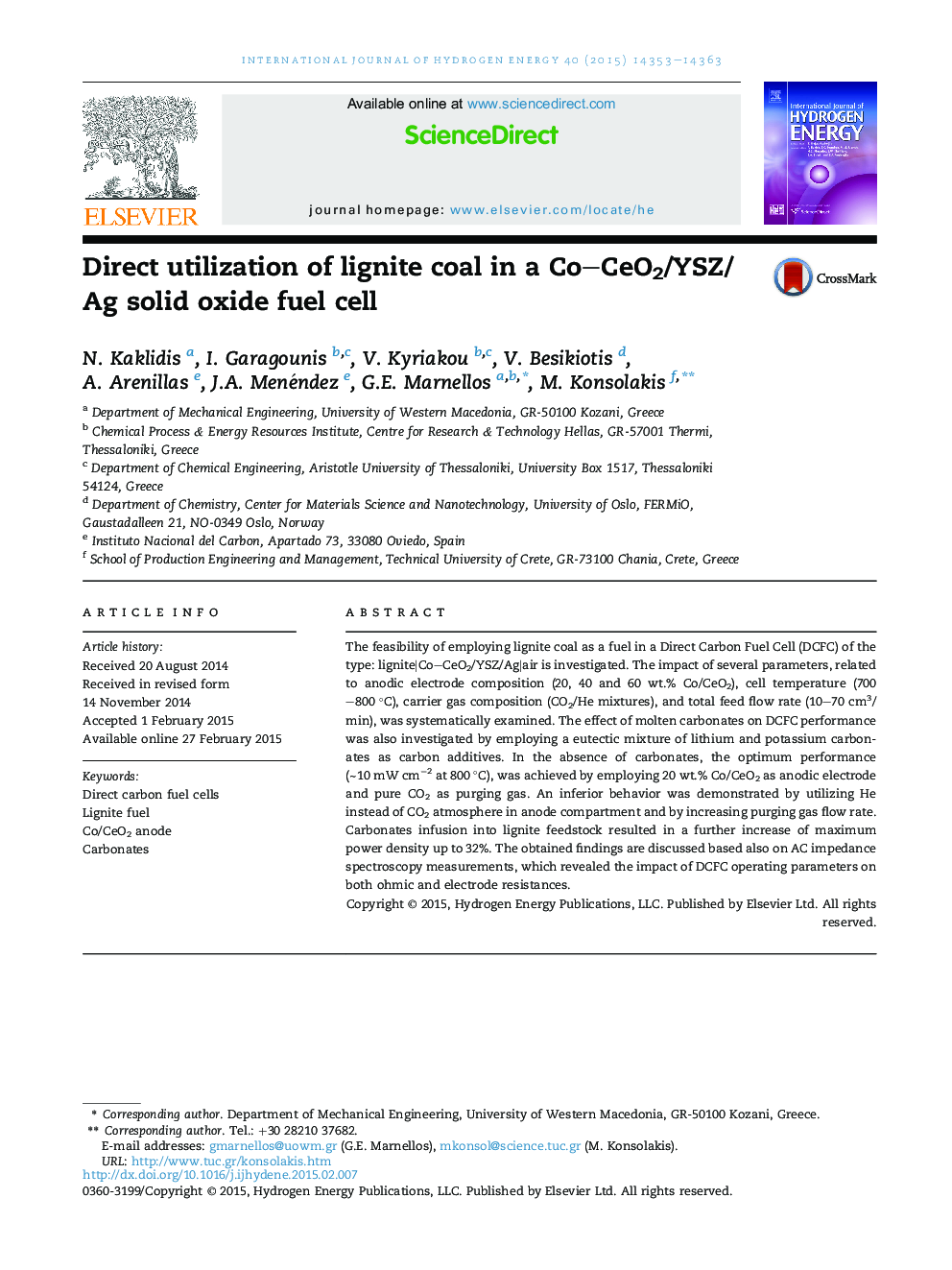| Article ID | Journal | Published Year | Pages | File Type |
|---|---|---|---|---|
| 1269166 | International Journal of Hydrogen Energy | 2015 | 11 Pages |
•The direct utilization of lignite coal in SOFCs is investigated.•The impact of anode, carrier gas and carrier gas flow rate is explored.•Best performance is achieved by employing 20 wt.% Co/CeO2 as anode under CO2 flow.•Carbonates infusion to lignite results in an increase of cell power up to 32%.•The in situ formed CO under CO2 flow provides faster kinetics and diffusion than lignite.
The feasibility of employing lignite coal as a fuel in a Direct Carbon Fuel Cell (DCFC) of the type: lignite|Co–CeO2/YSZ/Ag|air is investigated. The impact of several parameters, related to anodic electrode composition (20, 40 and 60 wt.% Co/CeO2), cell temperature (700–800 °C), carrier gas composition (CO2/He mixtures), and total feed flow rate (10–70 cm3/min), was systematically examined. The effect of molten carbonates on DCFC performance was also investigated by employing a eutectic mixture of lithium and potassium carbonates as carbon additives. In the absence of carbonates, the optimum performance (∼10 mW cm−2 at 800 °C), was achieved by employing 20 wt.% Co/CeO2 as anodic electrode and pure CO2 as purging gas. An inferior behavior was demonstrated by utilizing He instead of CO2 atmosphere in anode compartment and by increasing purging gas flow rate. Carbonates infusion into lignite feedstock resulted in a further increase of maximum power density up to 32%. The obtained findings are discussed based also on AC impedance spectroscopy measurements, which revealed the impact of DCFC operating parameters on both ohmic and electrode resistances.
Graphical abstractFigure optionsDownload full-size imageDownload as PowerPoint slide
